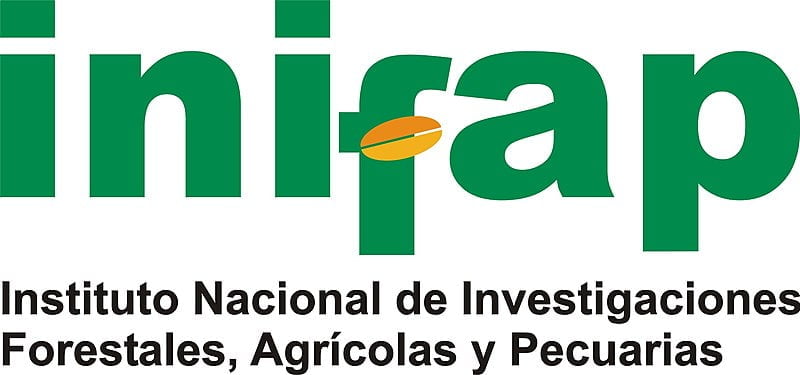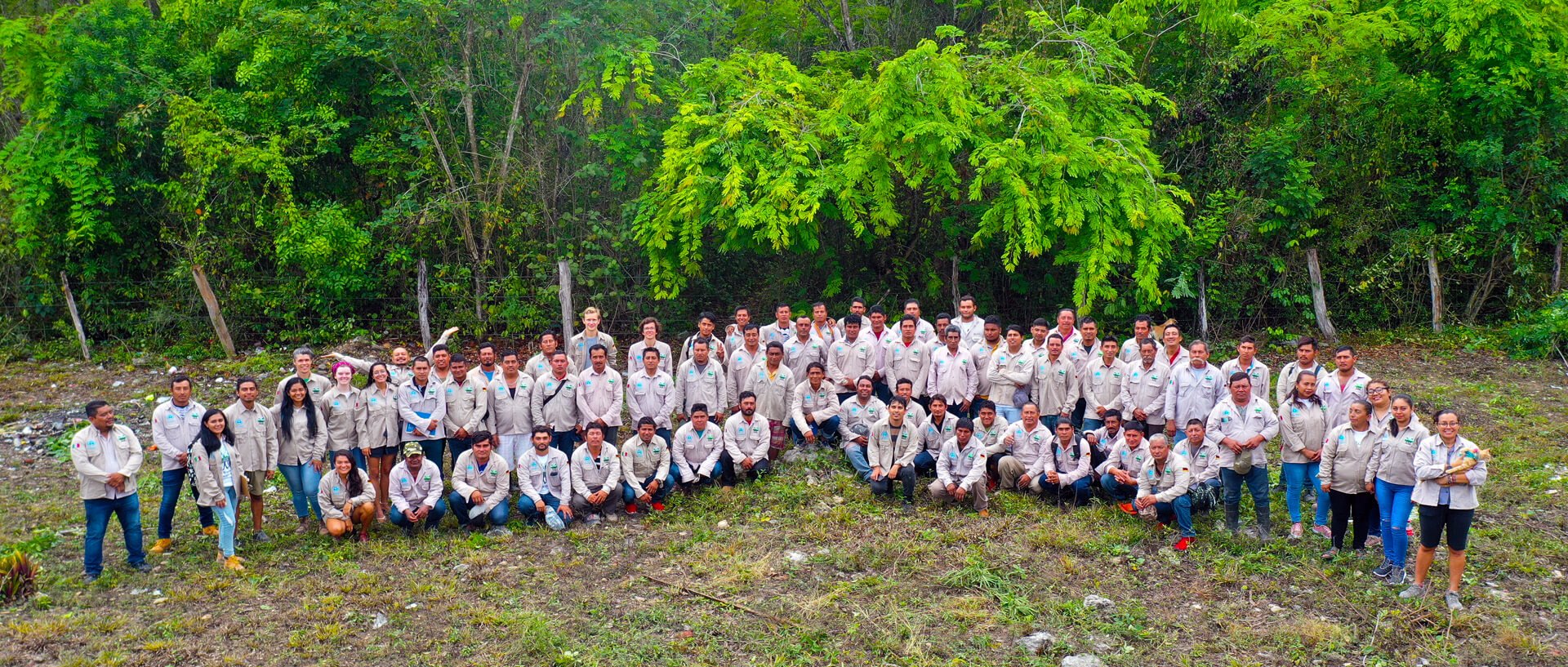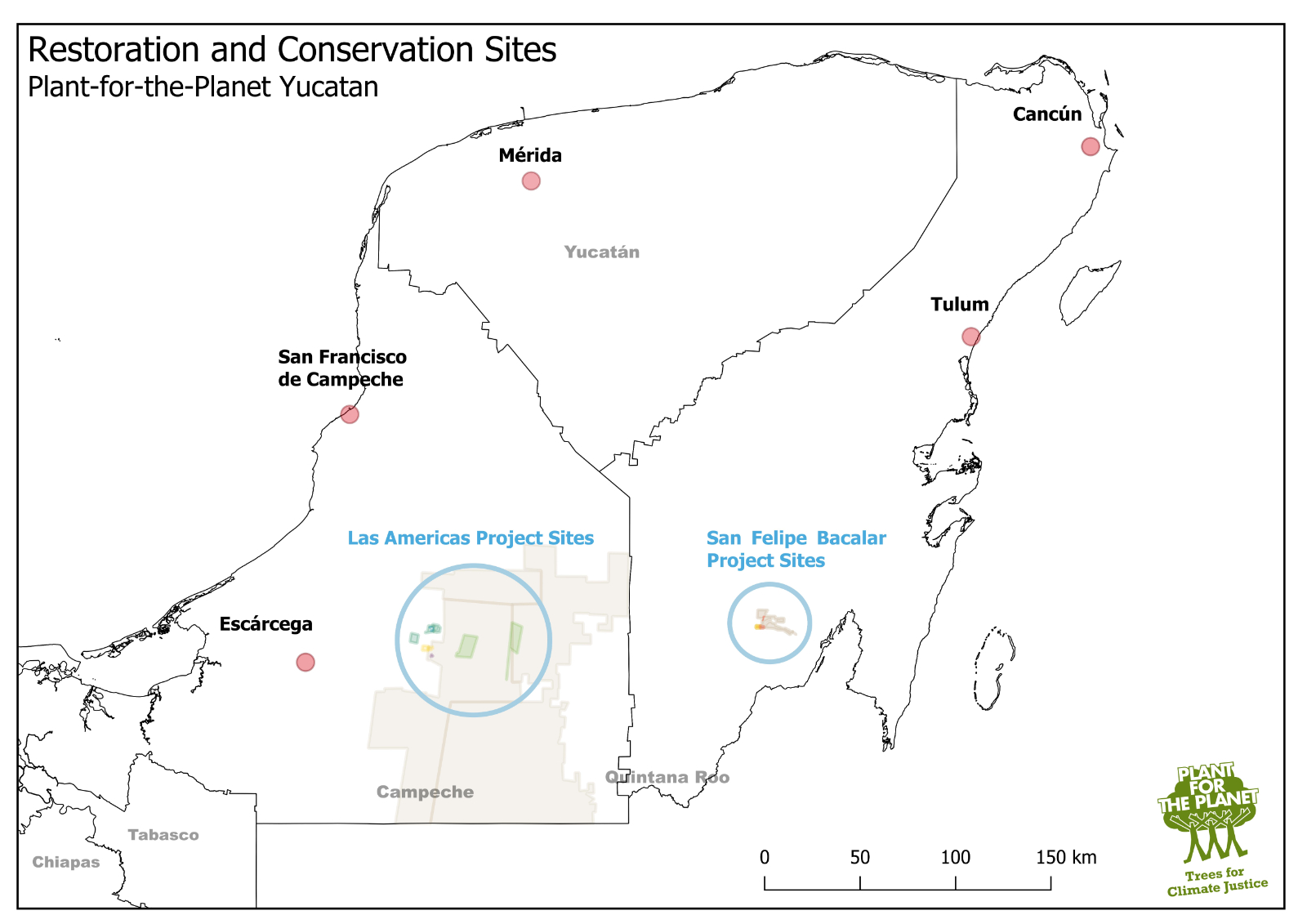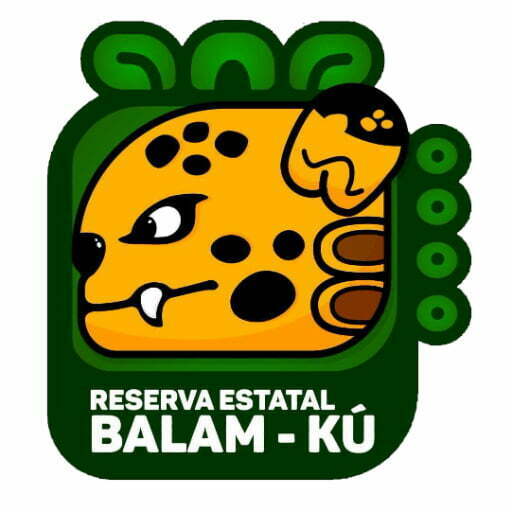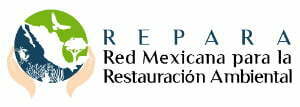Replanting Pastures and Restoring Forests
We are working to restore the forest landscapes in and around the San Felipe Bacalar Natural Protected Area, as well as the Balam-Kú nature reserve and Calakmul Biosphere Reserves. Our work takes place within 20,000 hectares, an area larger than the country of Liechtenstein.
Our sites have suffered different levels of degradation: Some areas are recently abandoned cattle pastures with only a few scattered trees left (like parts of Las Americas 5 & 7).
Other areas were never fully deforested, but either economically valuable trees have been logged or significant proportions of the forest were destroyed by fires (like San Felipe Bacalar A and B), leaving behind relatively species-poor vegetation. In other areas, the forest is still full of many species and we are either conserving it or letting it grow back on its own (like Las Americas 3 & 4).
According to Global Forest Watch estimations, deforestation in the three states of the Yucatán peninsula (Campeche, Quintana Roo, Yucatán) accounted for 42.3% of all forests lost between 2001 and 2020 across Mexico.
Mexico is the home of 12% of the world's biodiversity. That makes it the 5th most megadiverse country. Nonetheless it suffers from one of the worlds highest rates of deforestation.
Where the trees are planted – updated daily
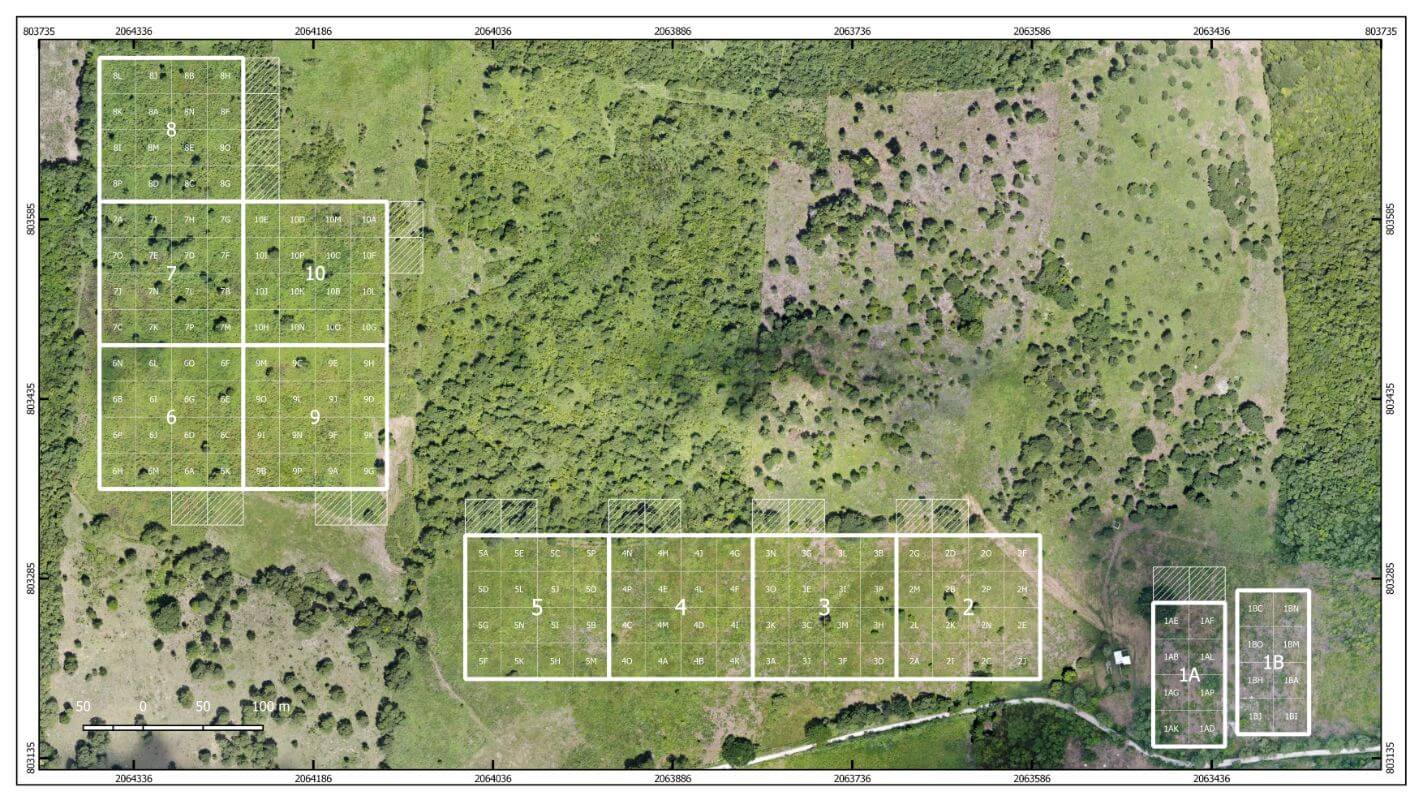
Restoration Ecology Research Station
41 Tree Species
One Ecosystem
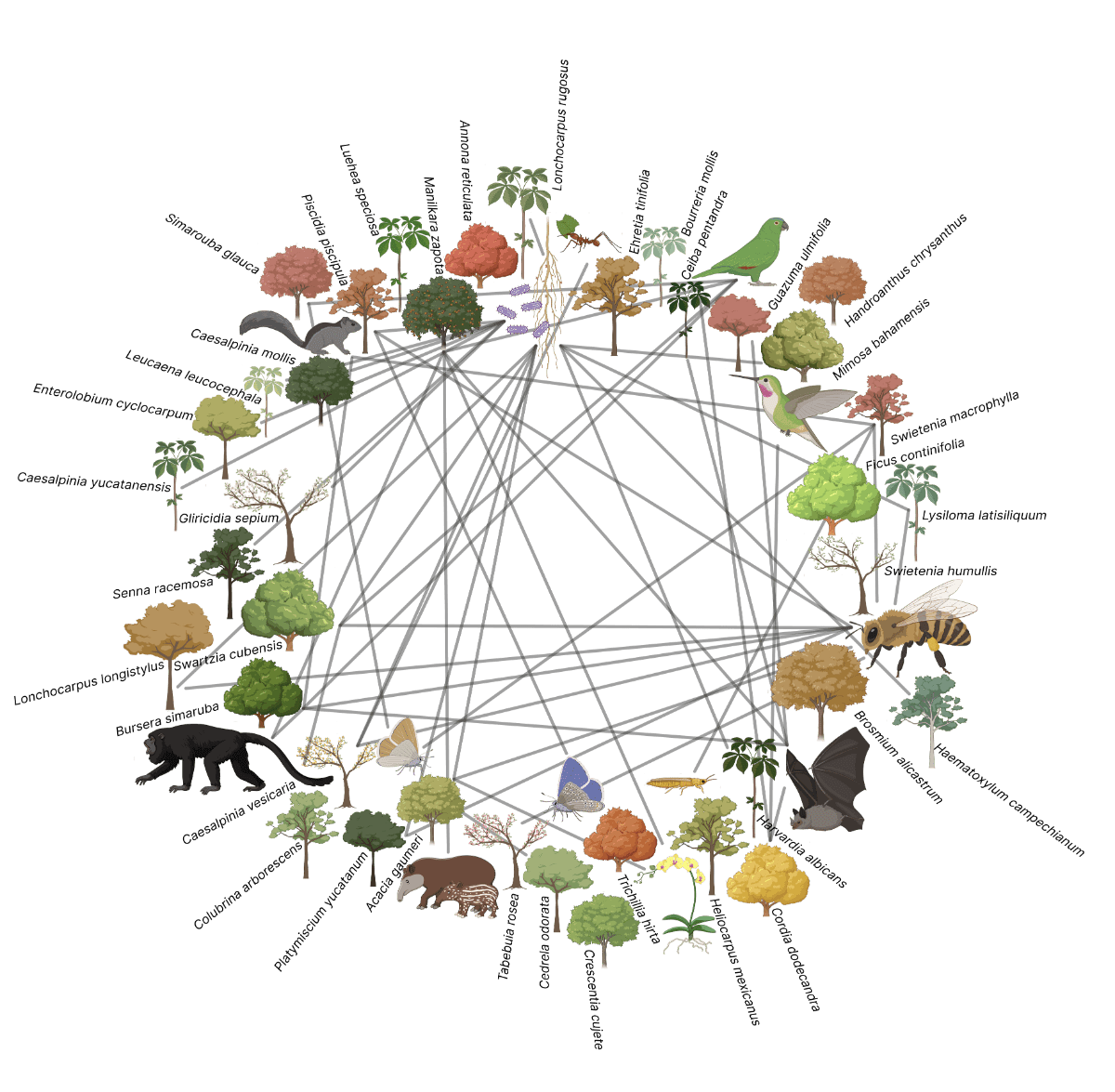
We want to restore these forests to capture carbon and to protect the local biodiversity of plant, animal, fungal and other species. We are continually increasing the number of species we plant. After working with 21 species in 2021, we worked with 33 species in 2022.
This includes many early successional species for our restoration in formerly pasture sites and dense wood species in our enrichment planting work.
Restoration in Yucatán: 7 Steps from Devastation to Biodiversity
Semi-evergreen Tropical Forest
We aim to restore a seasonal semi-evergreen tropical forest. Unlike the wetter forests we imagine when we think of the tropics, these forests have 4–6 month long dry seasons where only little rain falls. Where we work, 25–50% of the trees drop their leaves during that time because they are water stressed.
In the state of Campeche, where our work takes place, 8.1% of the original forest has been lost since 2002. Restoring this ecosystem is not just important for plants, but also the animals. In Campeche, jaguars and tapirs are in danger of extinction because of deforestation, habitat fragmentation and incidental deaths by human encounters.
In our sites, we often wake up to the sound of howler monkeys near the camp and see box turtles while planting. So far, only Nicolas, Juan and Jose have seen Jaguars.
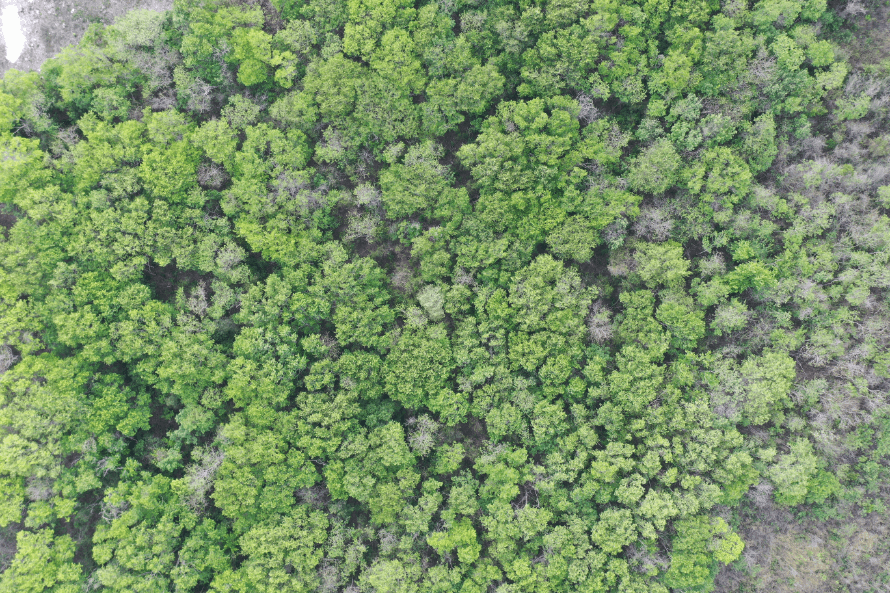
Forest Conservation
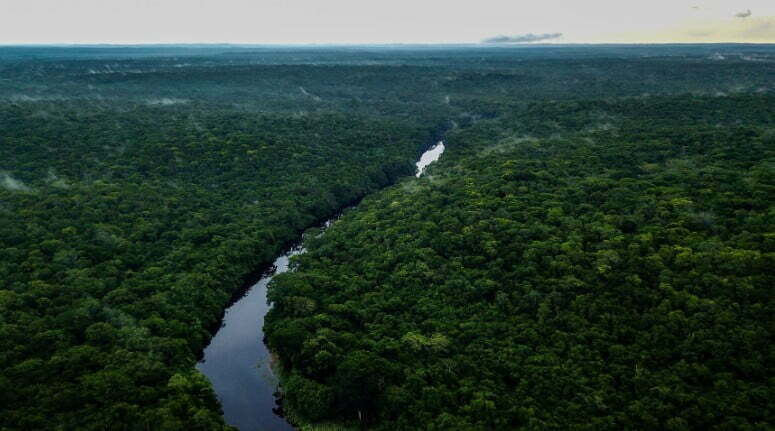

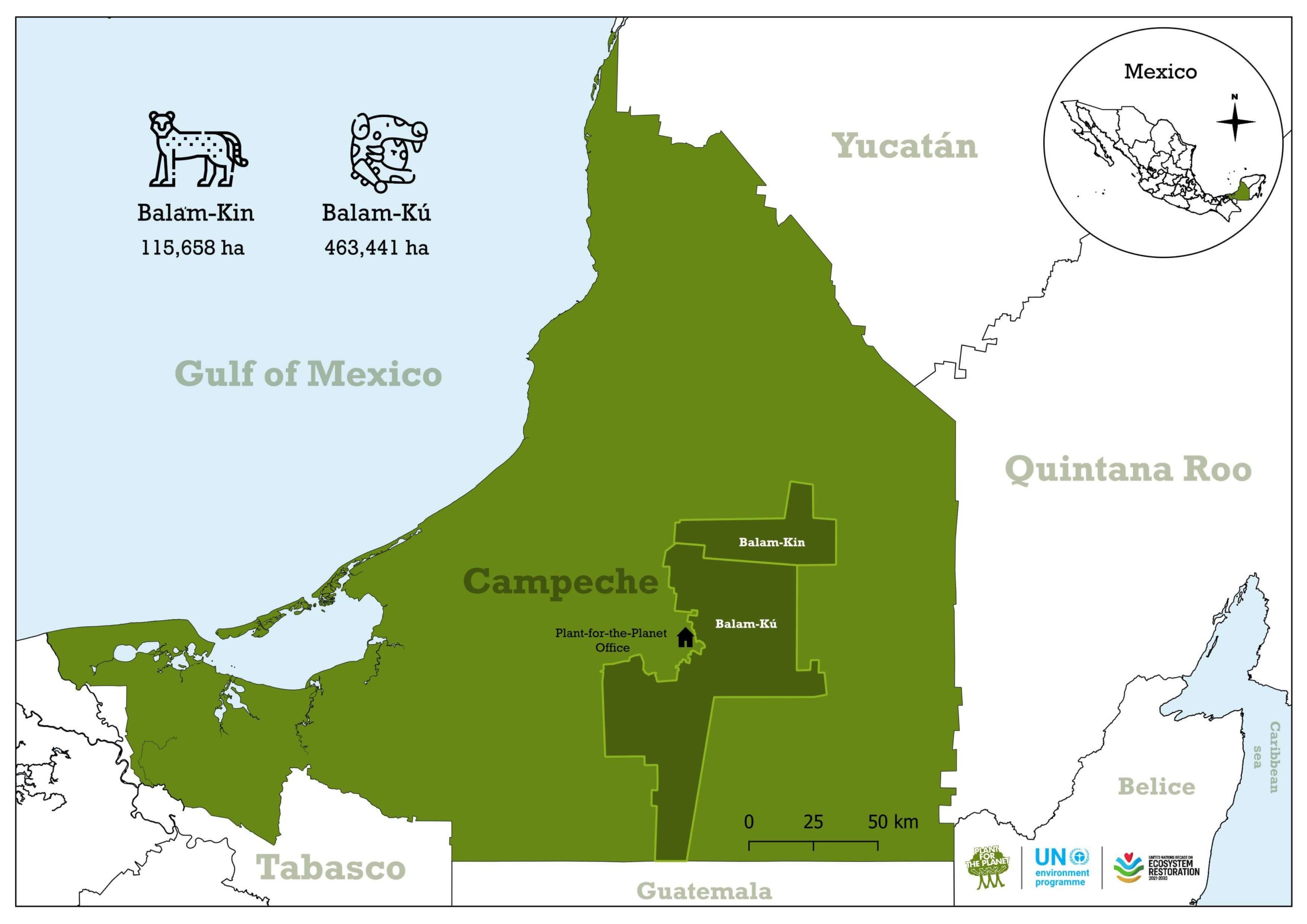
Annual Technical and Financial Report 2021
English (Translation)Annual Technical and Financial Report 2021
Spanish (Original)Activities carried out, recommendations and
Experiences from the year 2021
Activities carried out, recommendations and
Experiences from the year 2021
Project Leader
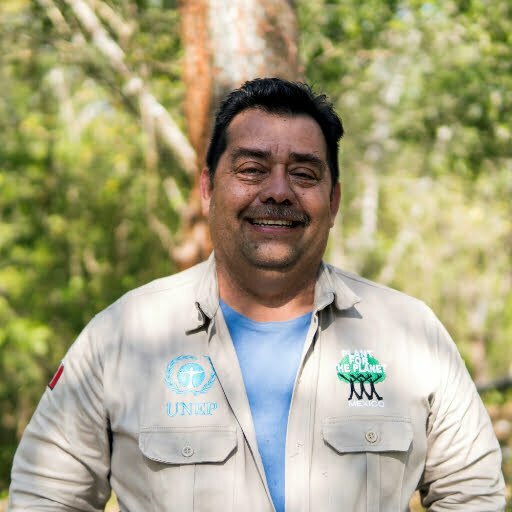
Advisory Board
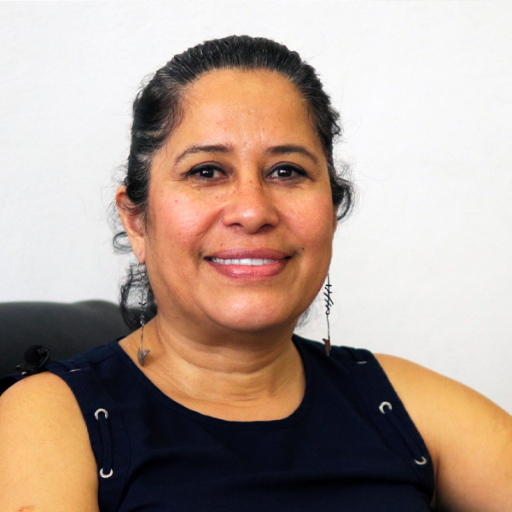

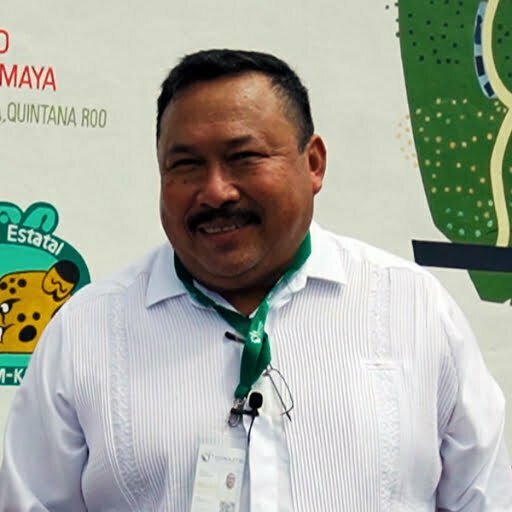
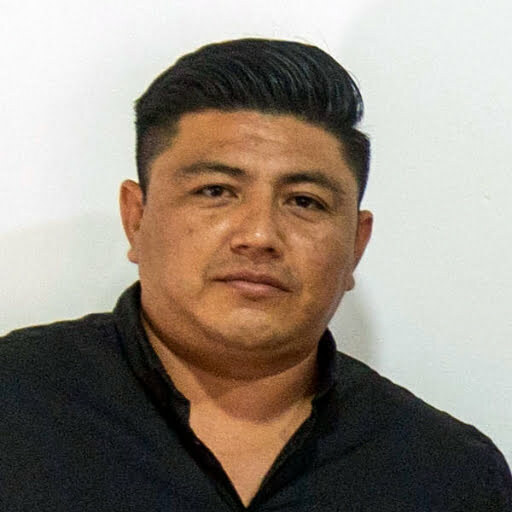
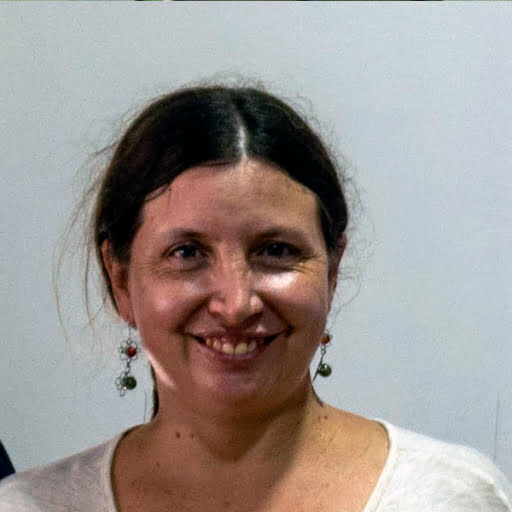
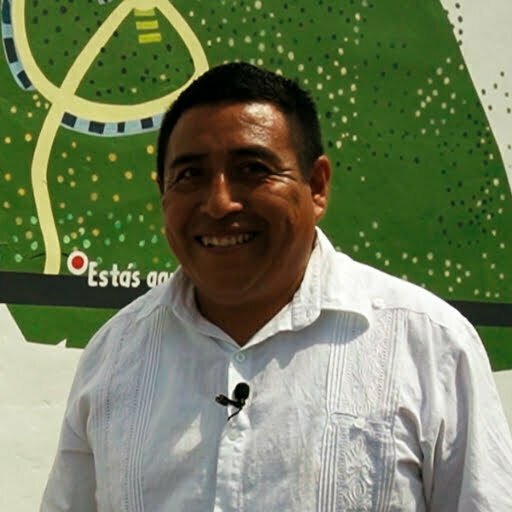
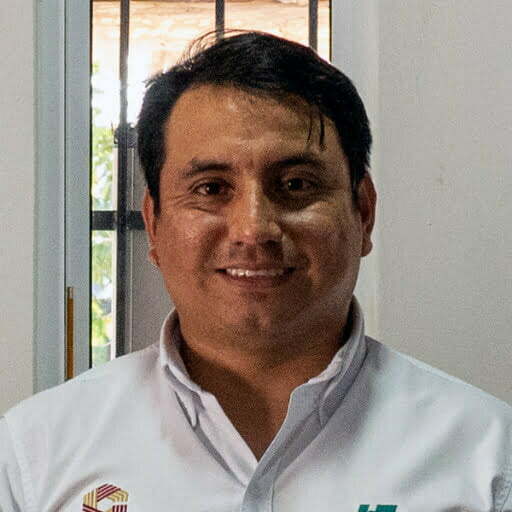

Restoration Supervision Expert Board
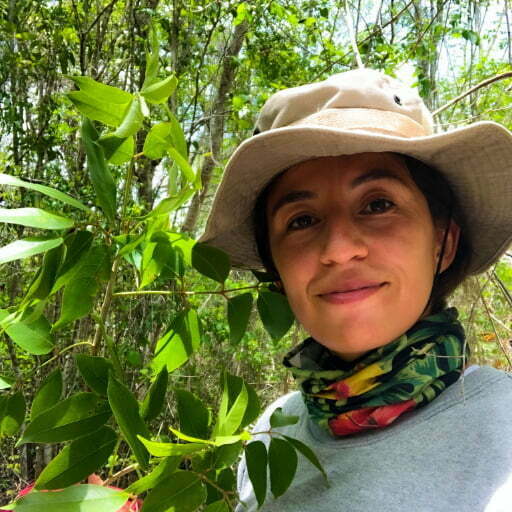
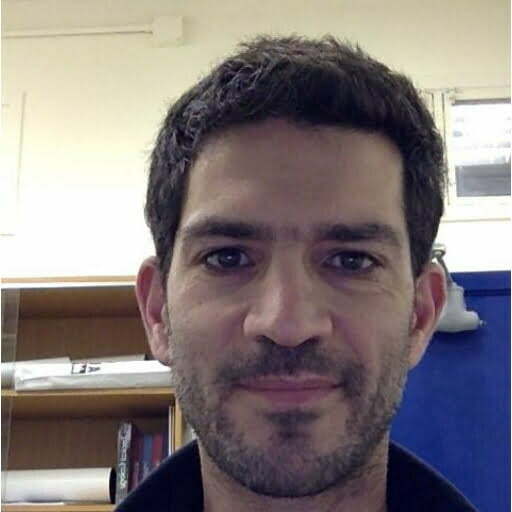
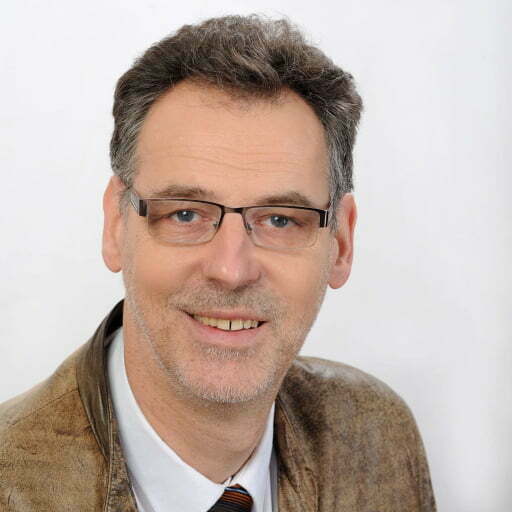
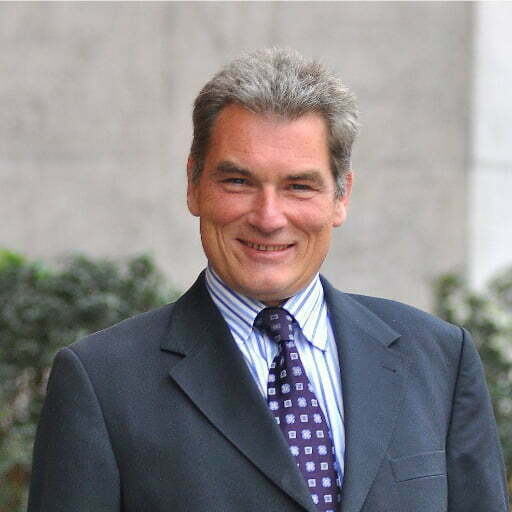
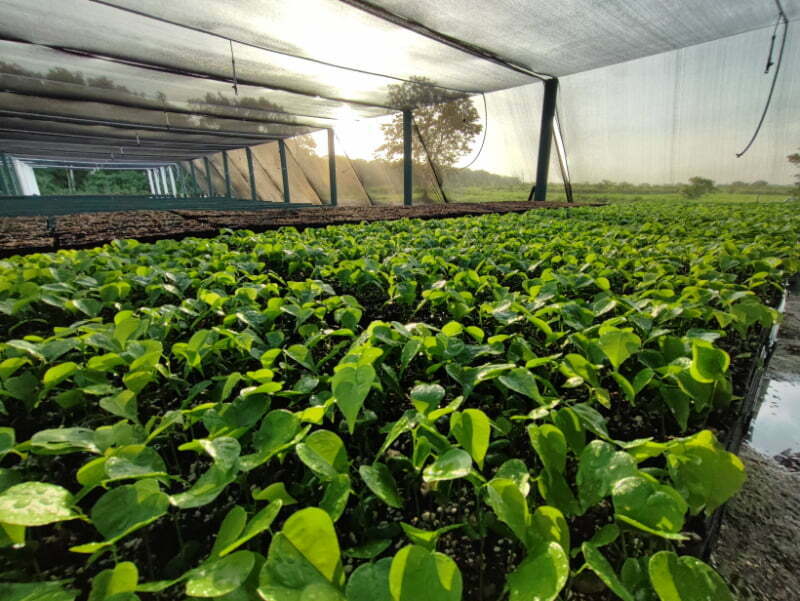
The Three Nurseries
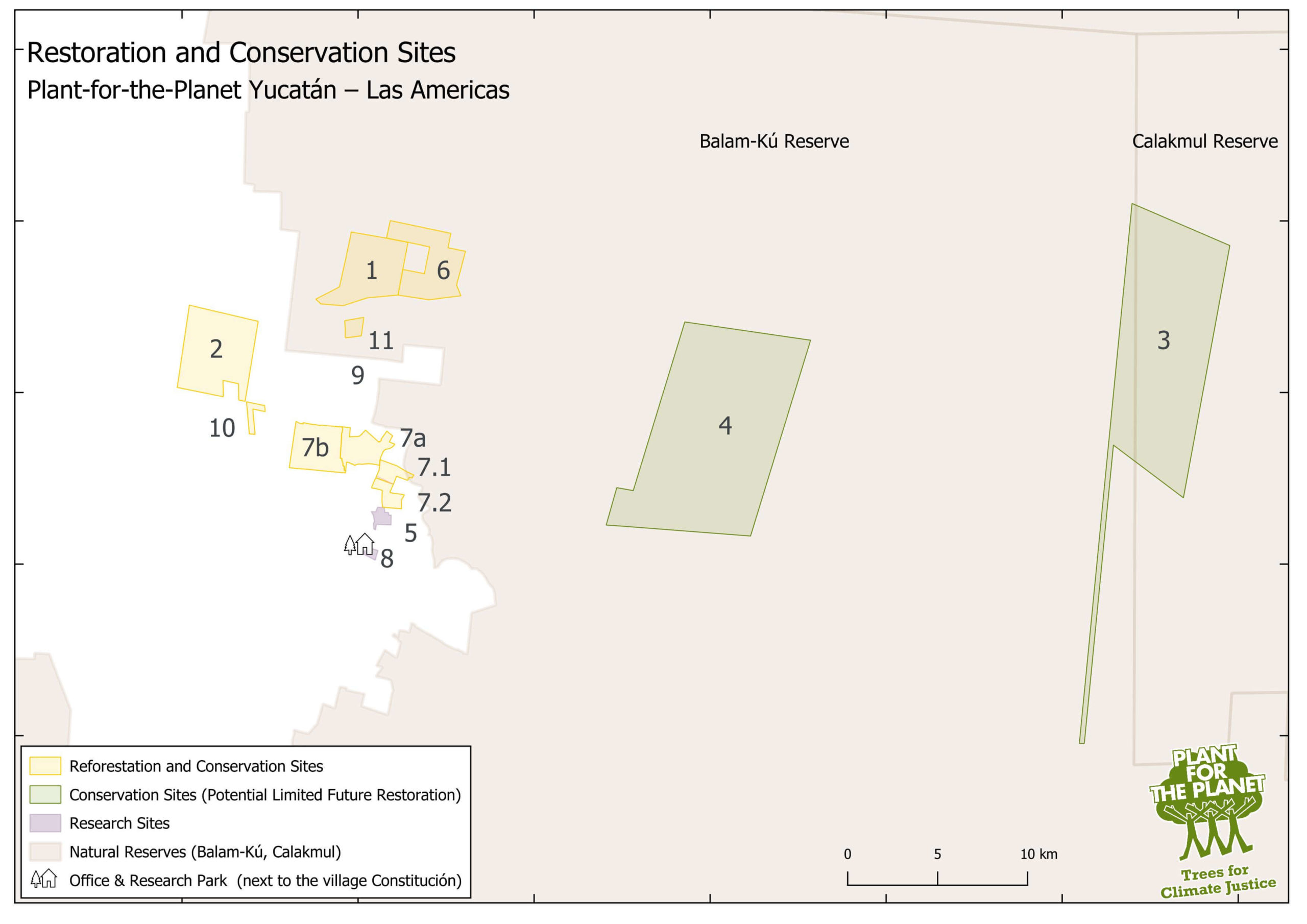
Balam-Kú/Calakmul Biosphere Reserve Region
-
Las Américas 7 (7a, 7b, 7.1, 7.2)
The western half (7b) of the site is mostly intact forest, with smaller patches of degradation. The eastern half is entirely deforested. During 2021 we mainly restored the forest in Las Américas 7a and partly 7.1. In 2022 we will focus on the deforested and degraded sites in 7a, 7.1 and 7.2. - Las Américas 5
Our research site (90 ha) is located within the Balam-Kú Ecosystem Reserve. It is just one km from our office and is used for our large-scale field trials. In collaboration with Imperial College London and ETH Zurich we are doing research to optimize forest restoration techniques. - Las Américas 3 & 4
Our two largest project sites are within the Calakmul and Balam-Kú reserves. They are the least degraded of all our project sites. All areas not severely degraded are conserved and allowed to naturally regenerate. Together with the government of Campeche we support the protection of these ecosystems. If sufficient degradation is discovered to merit an intensive restoration intervention, we will apply for a permit and potentially begin work in 2023. - Las Américas 1,2 & 6
These sites experienced varying states of degradation. In the years 2015–2020, we reforested and implemented enrichment planting. - Las Américas 10
This site, close to Las Américas 2, includes 48 deforested hectares. It is a flood prone site. This low thorny forest will be restored and protected starting in 2022 and 2023. - Las Américas 11
Las Américas 11 has approximately 50 ha of deforested, former cattle pasture. The many limestone rocks and the thin soil in the first horizon makes the restoration of the lowland flooded forest or lowland thorny forest more difficult. Planting began here in 2022.
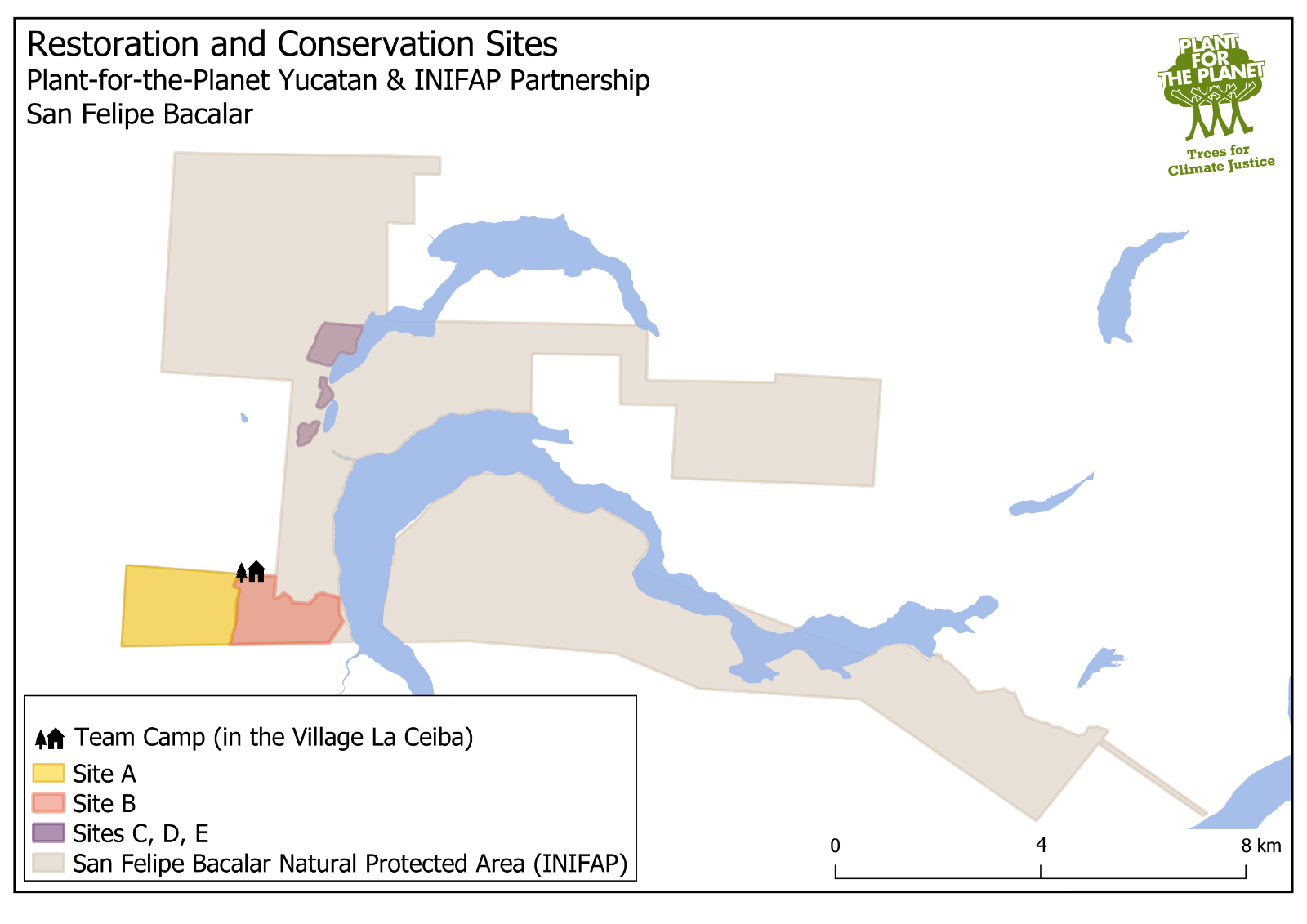
San Felipe Bacalar Natural Protected Area
- San Felipe Bacalar A
339 hectares of forest burned in 2019. However, many trees survived the blaze. We are conducting enrichment planting in 2021 to restore the lost species. - San Felipe Bacalar B
Another devastating fire in 2020 affected this section (220 ha) of the Natural Protected Area. We will be conducting enrichment planting here in 2022. - San Felipe Bacalar C, D & E
We will be converting what used to be an 87 ha coconut plantation back into a natural forest.
The Las Americas sites are owned by Plant-for-the-Planet. The San Felipe Bacalar sites are owned by our partners, INIFAP. INIFAP is a federal agriculture and forestry research institution. We partnered to restore the San Felipe Bacalar Natural Protected Area. As part of this partnership, Plant-for-the-Planet is conducting the restoration and maintenance work of the trees for the first three years after planting, in close collaboration with INIFAP. INIFAP is then responsible for the long-term protection of the forests.
We aim to plant 100 million trees in Mexico by 2030. That’s a very ambitious target. Not all of these trees are to be planted on the Yucatan Peninsula, but also in other efforts around the country. Of course, the sites of Plant-for-the-Planet and its partners are not big enough for all these trees. We are continuously looking for additional sites to continue our work.
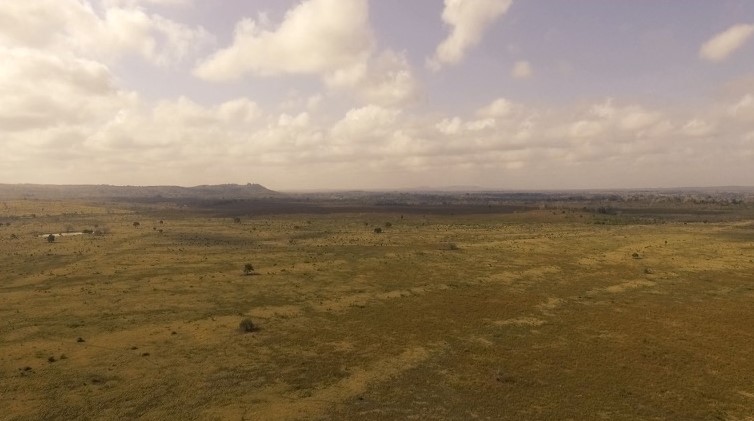
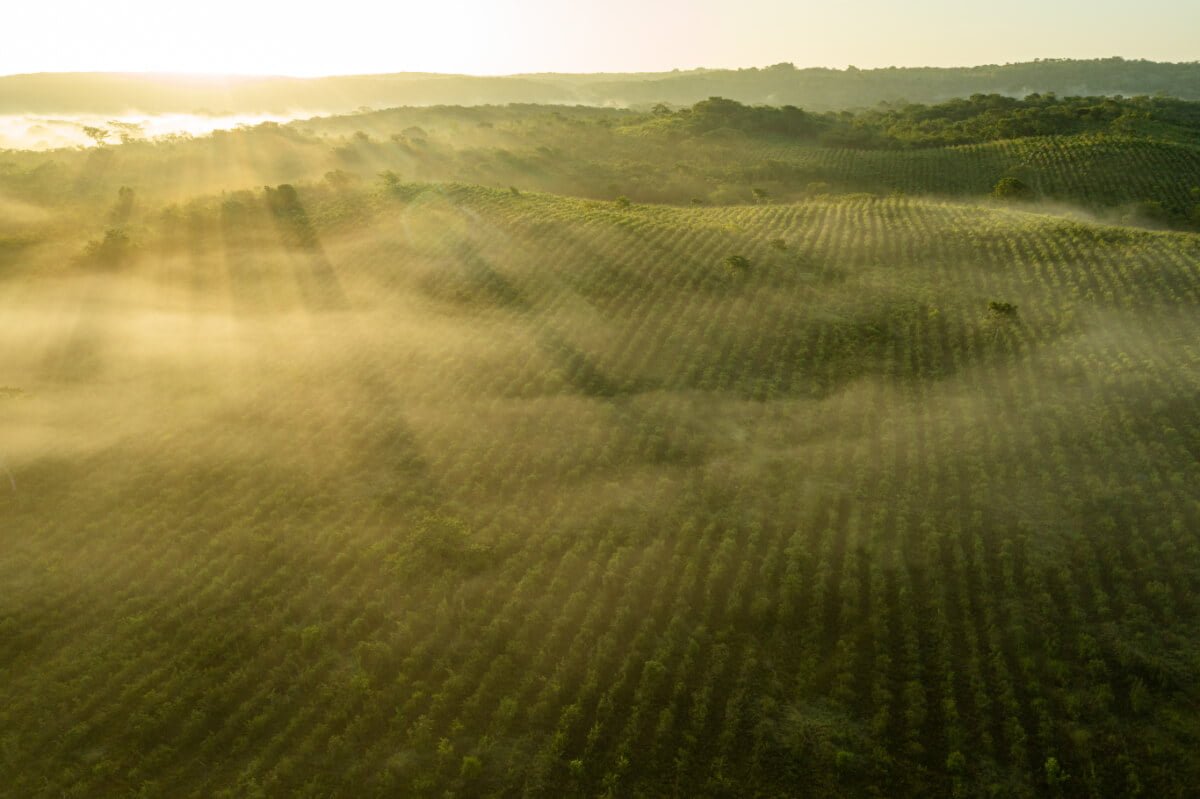
In addition to our work on the Yucatán Peninsula, we also work with partners to restore the forest in central Mexico (see below). Depending on where they are needed most, tree-donations to Plant-for-the-Planet are allocated to one of these two projects.
We are incredibly grateful for every donor and supporter allowing us to restore these ecosystems. Due to the delays caused by the Covid-19 pandemic and in order to focus on maximising the diversity of species planted and to do our best to restore these ecosystems as well as possible, we are not scaling up our operations as quickly as initially planned. Thus, we expect that trees donated today might not be planted until late 2023 or even the 2024 planting season.
Restoration Incidents
Managing environmental incidents, like flooding and fires are an important part of our work. In the interest of transparency, we are logging all such incidents.
Survival Rates
The survival rates of our planted seedlings vary substantially. Key factors affecting survival rates include the species planted as well as the site’s soil types and level of ecosystem degradation. We could alter species selection to increase survival rate but we choose to prioritise biodiversity over survival rates. When we expect lower survival rates due to poor soil quality or intense degradation, we increase the planting density to ensure that the forest can develop nonetheless.
Another important factor is the amount of rain in the days preceding and following outplanting. We do have some influence here. We naturally do not plant at all during the dry season and pause planting during the wet season when precipitation drops.
The survival rates of 2021 were relatively low, since it was a particularly dry year (CONAGUA, 2022) and we planted a lot of our trees in very challenging conditions with poor soil quality and intense degradation. These latter conditions also apply for many of the sites we work on in 2022.
The first year survival rates for the trees planted in 2021 range from 9.13% to 78.56% at the site level. In Las Americas 7a – the site with the most challenging conditions – the average survival rate was 11.3% (measured range: 0.1% – 41.5%). In San Felipe de Bacalar the average survival rate was 36.4% (measured range: 9.2% – 78.56 %).
We continuously work on improving our restoration process to increase our survival rates. Some of our research efforts look at how different restoration methods may increase survival rates and growth rates.
But fundamentally, we plant trees not to grow trees, but to grow diverse, native forests. So the key long term metrics are not initial survival rates but plant, animal, bacterial and fungal diversity in our forests.
Note: Las Americas 7a data is based on a complete census of all trees planted and the San Felipe de Bacalar data on a random 20% subsection.

